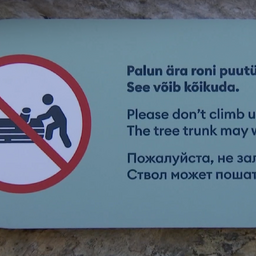Today, there are many prohibition signs. For example, you cannot ride a bicycle in a store, and you cannot take painkillers on a playground. Swinging during the rain is also prohibited. Why so many prohibitions?
Some prohibition signs come at the request of product manufacturers and attraction owners. Others are from people's own will. For example, parents want to take care of their children, but they cannot make the rules. Then it is easier to display a prohibition sign.
There are also many prohibition signs in the zoo. For example, you cannot lift a child over the barrier because there are dangerous animals there. Some do not understand why this is necessary. But sometimes people do dangerous things. That is why these signs are necessary.
According to a lawyer in Estonia, the zoo should not be very intimidating if someone touches the cage. The courts are reasonable, and compensation is small. Signs are not always necessary.
According to a university lecturer, prohibition signs show that some rules are not clear. Signs should be in place where they help. If everyone does something that is prohibited, the signs will not help.
People have communication problems. For example, instead of discussing a problem with a neighbor, a prohibition sign is placed. There can be too many signs. People do not have time to read them all.
Some think that people are becoming dumber. Therefore, more signs are put up. But in reality, stupidity does not change. We just worry more.

